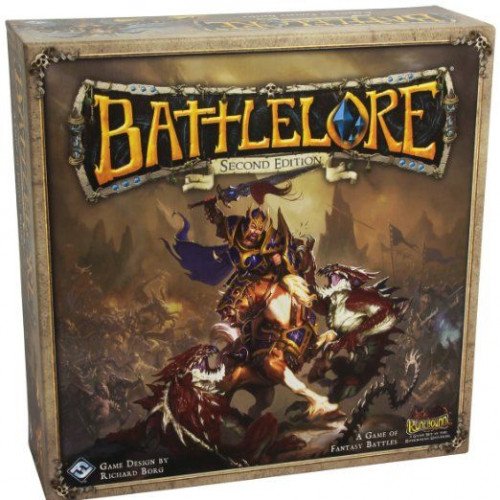BATTLELORE VS HEX

BATTLELORE
BattleLore is a strategy board wargame for two players, created by Richard Borg and initially published by Days of Wonder in 2006 (and later by Fantasy Flight Games). The game is based on the same mechanics as Battle Cry, Memoir '44 and Commands & Colors: Ancients, but has a fantasy and medieval theme. BattleLore debuted at the 2006 Spiel game fair in Essen, Germany and was released worldwide on November 30 of that year. Typical setup for a game is 10–15 minutes. Beginning players can expect a 45-60 minute duration game, but experienced players can usually finish a game in about 30–45 minutes. Each player has a set of quick reference cards to help him keep rules in mind. Experienced players will rarely have to pull out the rulebook for clarification. The scenario book that comes with the basic box is organised as a tutorial sequence that introduces concepts one adventure at a time, making the game very easy to learn. Each adventure in Battlelore is pre-constructed, leaving the work of creating armies to the scenario author. Although with the Call to Arms Expansion (released May 2007) the players have (limited) control on deploying units to any given scenario. The Battlelore website offers an online scenario builder that helps fans create their own adventures. In September 2008 Fantasy Flight Games and Days of Wonder announced that the game would be moving to Fantasy Flight Games, along with all remaining stock. In 2013, a revised version, BattleLore Second Edition, was released by Fantasy Flight Games.
Statistics for this Xoptio

HEX
Hex is a two player abstract strategy board game in which players attempt to connect opposite sides of a hexagonal board. Hex was invented by mathematician and poet Piet Hein in 1942 and independently by John Nash in 1948. It is traditionally played on an 11×11 rhombus board, although 13×13 and 19×19 boards are also popular. Each player is assigned a pair of opposite sides of the board which they must try to connect by taking turns placing a stone of their color onto any empty space. Once placed, the stones are unable to be moved or removed. A player wins when they successfully connect their sides together through a chain of adjacent stones. Draws are impossible in Hex due to the topology of the game board. The game has deep strategy, sharp tactics and a profound mathematical underpinning related to the Brouwer fixed-point theorem. The game was first marketed as a board game in Denmark under the name Con-tac-tix, and Parker Brothers marketed a version of it in 1952 called Hex; they are no longer in production. Hex can also be played with paper and pencil on hexagonally ruled graph paper. Hex-related research is current in the areas of topology, graph and matroid theory, combinatorics, game theory and artificial intelligence.